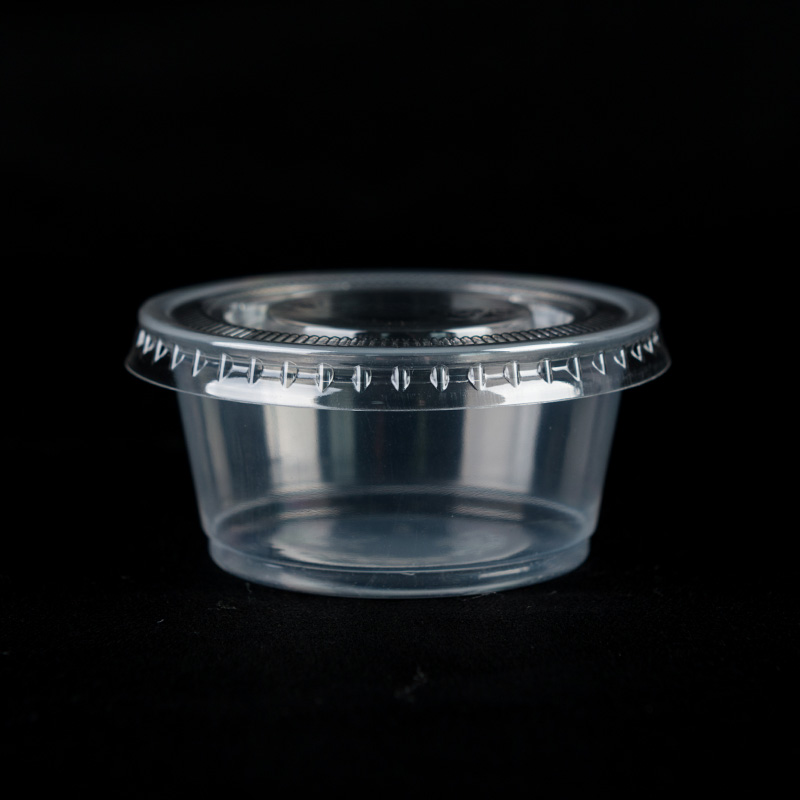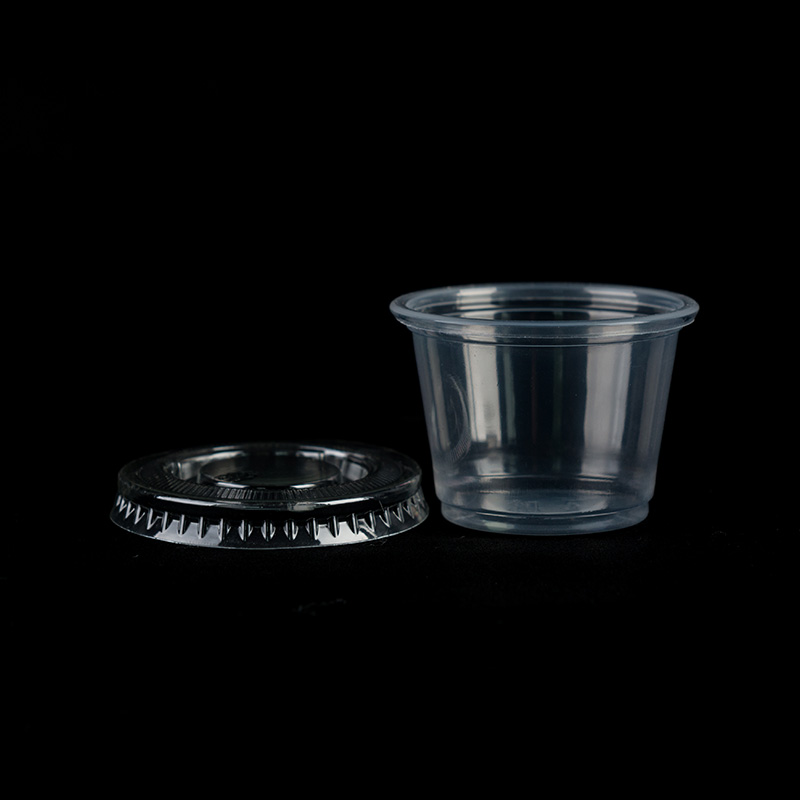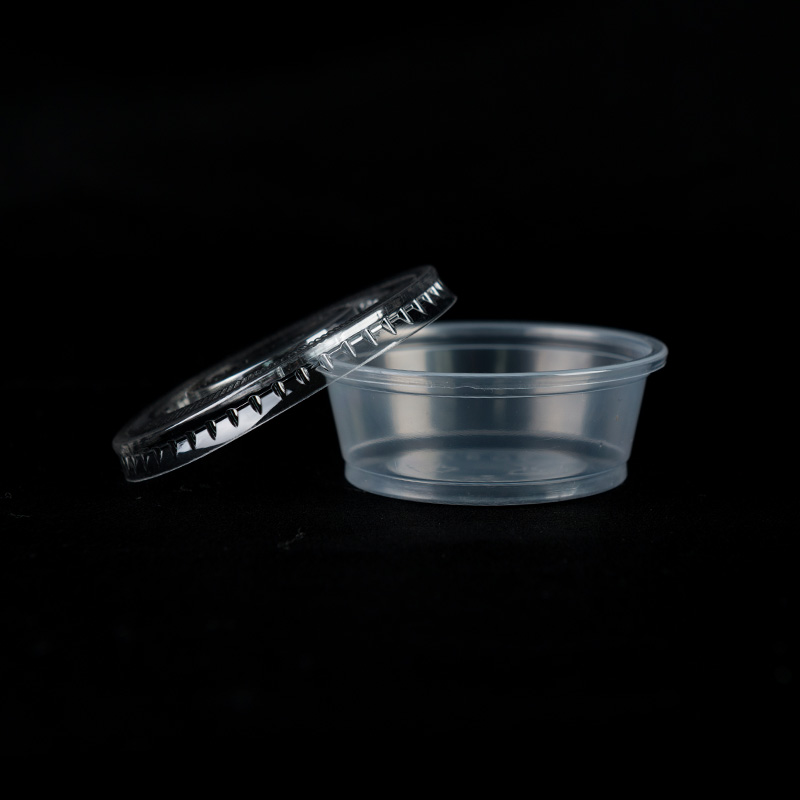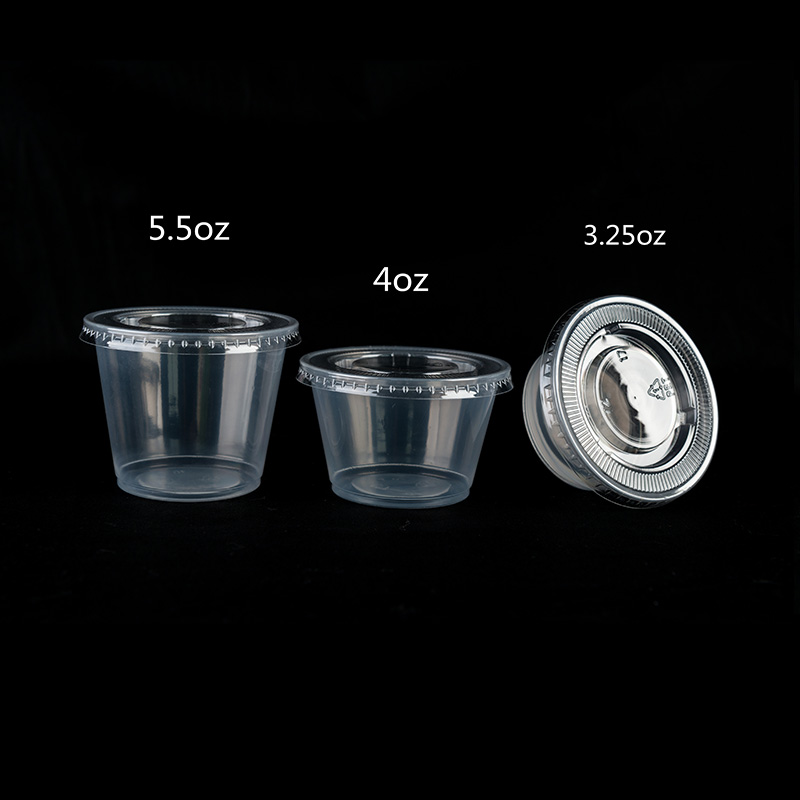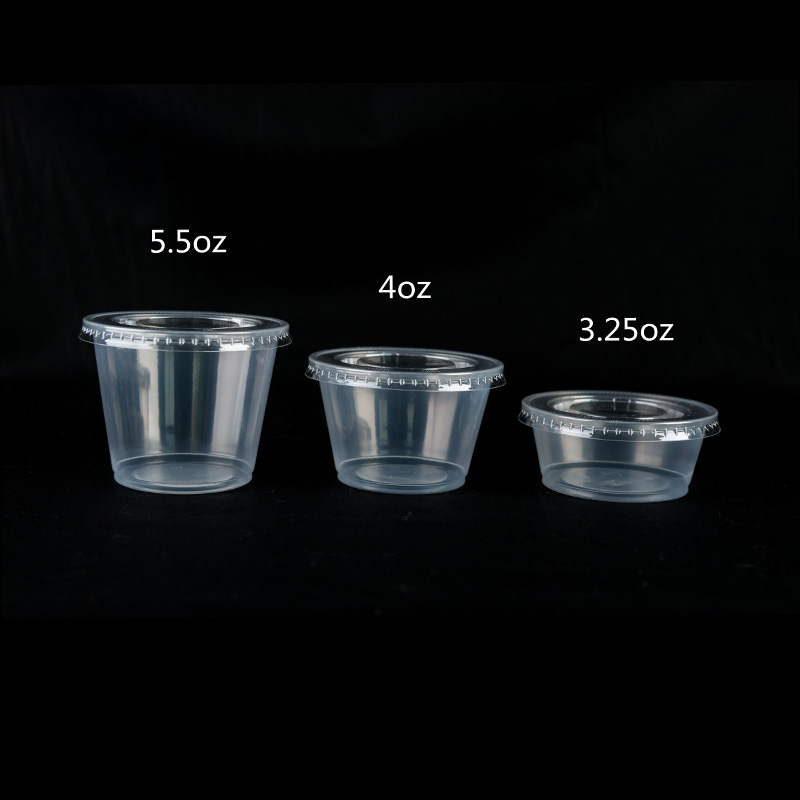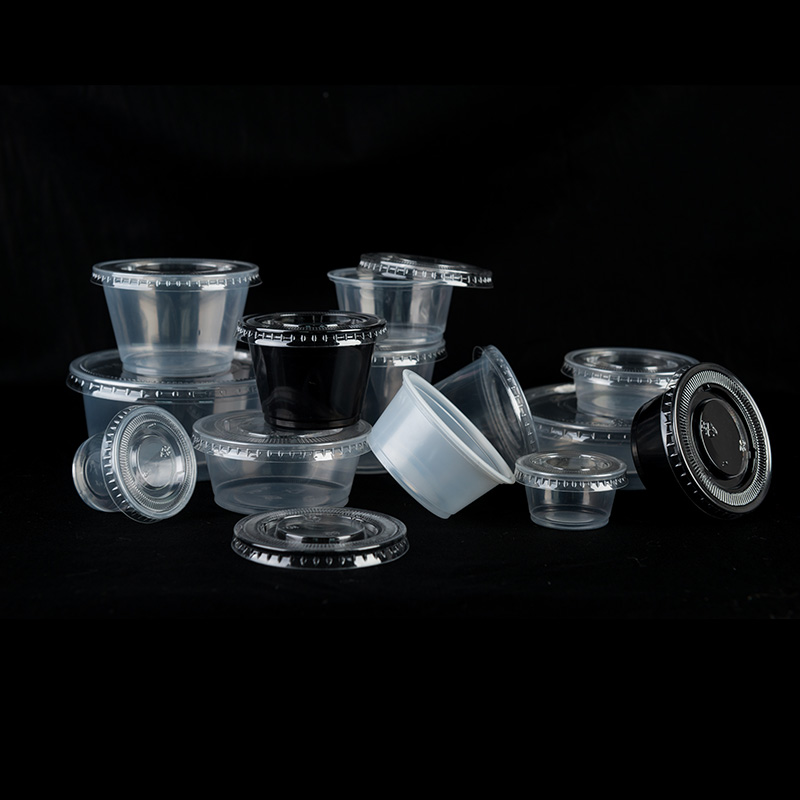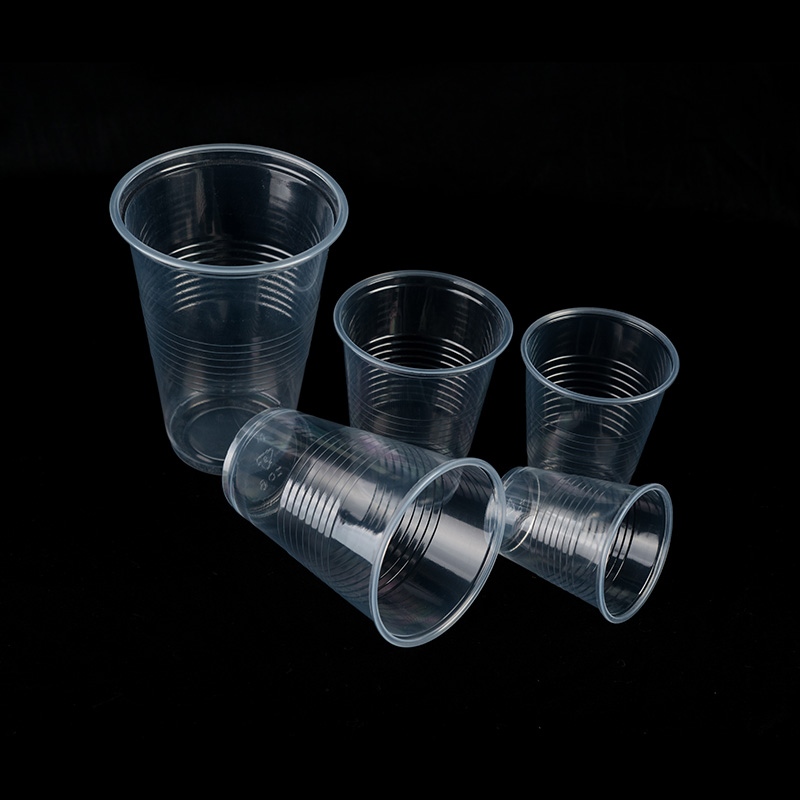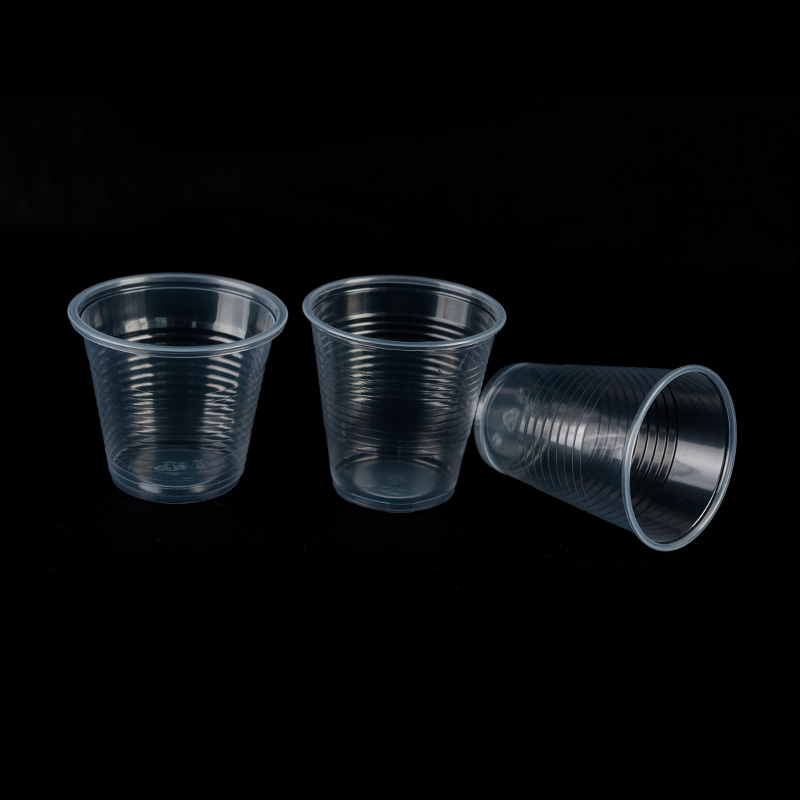When meal-prep enthusiasts reach for a stack of portion cups, the question that flashes across their minds is usually the same: “Can this Portion Cup With Lid survive the microwave without warping, leaching, or exploding?” The answer is not a simple yes or no. It depends on three variables—material, temperature rating, and venting design—and a few habits that separate a stress-free reheating session from a kitchen disaster.
To begin with, inspect the resin code. many disposable plastic portion cups are made from either polypropylene (PP, #5) or polystyrene (PS, #6). Polypropylene tolerates temperatures up to about 250 °F (121 °C), so a PP cup that carries a clear “microwave-safe” icon, usually three wavy lines or a microwave silhouette, is generally safe for short reheats. Polystyrene, on the other hand, softens around 180 °F (82 °C) and can release styrene monomers when overheated; unless the package explicitly states “microwavable,” keep PS cups out of the microwave. A quick visual cue: PP cups feel slightly flexible, while PS cups are rigid and often crystal-clear.
Second, evaluate the lid. Even if the cup itself is microwave-safe, the lid may not be. Many snap-on lids are made from low-density polyethylene (LDPE, #4) or a blend that includes PS. Both can deform under steam pressure, creating a messy seal failure. The safest practice is to loosen or fully remove the lid before microwaving; if you need to prevent splatters, place the lid loosely on top without engaging the rim seal. Some good lines now feature heat-resistant PP lids with a silicone gasket and a steam vent—look for a small star-shaped valve that pops up when pressure builds.
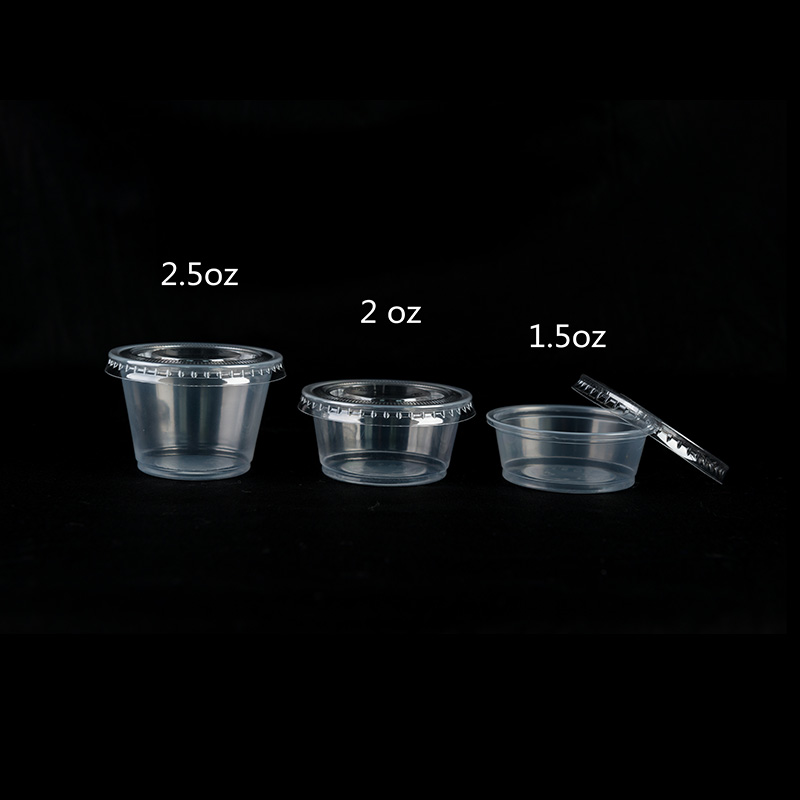
Third, understand portion size and power settings. A 2-ounce condiment cup reheated for thirty seconds on high is unlikely to reach critical temperatures, but a 32-ounce soup portion heated for three minutes can exceed the thermal ceiling of any plastic. Reduce power to 70 % and stir halfway to distribute heat evenly. Glass or ceramic portion cups with vented PP lids offer an alternative for larger servings; they eliminate chemical migration concerns entirely and still give you the portion-control benefit.
Fourth, watch for hidden metal. Decorative foil stamping on upscale deli cups or metallic trim on reusable bento-style containers can spark in the microwave. Even a tiny foil accent can ignite, so scan the rim and base before pressing start.
Finally, adopt a post-heat safety check. After microwaving, look for cup distortion, lid bubbling, or any off-odor; these are warning signs that the polymer has exceeded its safe range. Discard any cup that shows warping or discoloration—structural integrity, once compromised, will not recover.
In short, a Portion Cup With Lid is microwave-safe only when every component is rated for the journey. Read the label, vent the lid, and match portion size to power level. Follow those steps, and your goodly portioned leftovers will emerge piping hot without a side of melted plastic.



 English
English عربى
عربى
